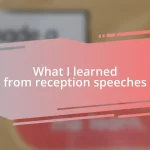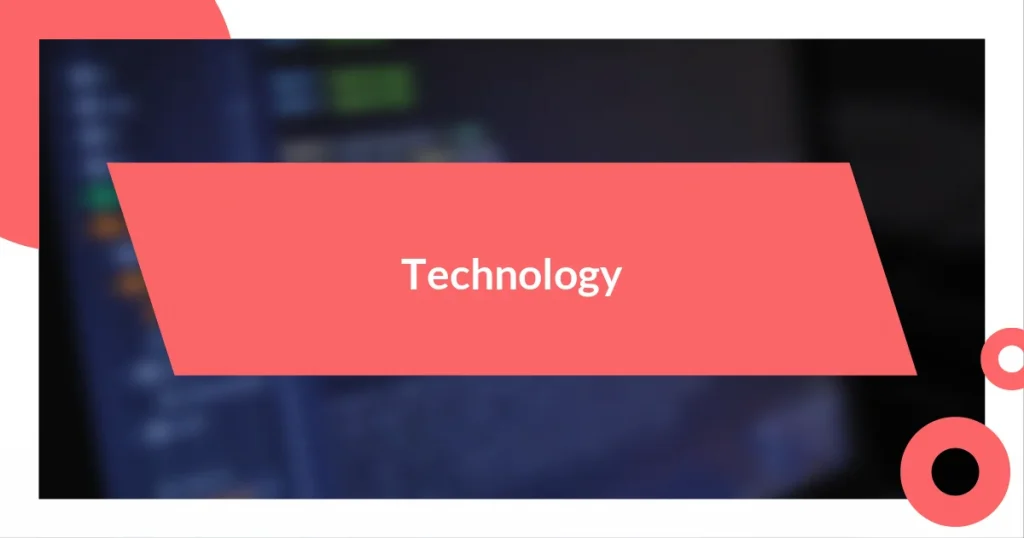Key takeaways:
- Taking breaks before editing provides fresh perspectives, helping identify issues in writing.
- Seeking feedback from peers enhances clarity and improves narrative quality, revealing overlooked areas.
- Using tools like Grammarly and Hemingway Editor streamlines the editing process while thorough proofreading ensures professionalism.

Understanding My Editing Process
When I dive into editing, I start by stepping away from my work for a bit. I find that taking a break allows my mind to reset, making me approach my writing with fresh eyes. Have you ever found clarity after a little distance? It’s almost magical how that space can help reveal what isn’t working.
As I read through my manuscript, I tend to focus on areas where I feel the writing lacks rhythm or flow. I remember a piece I was particularly attached to, but it felt clunky. After rewriting a few sentences, I felt a sense of liberation. It reminded me that sometimes, letting go of our favorite phrases can lead to stronger writing—do you ever struggle with that too?
Another crucial step in my editing process is seeking feedback from trusted peers. I cherish this exchange; their insights often highlight aspects I overlooked. I still recall a moment when a colleague pointed out a confusing section. That feedback was uncomfortable to hear, yet it ultimately led to a much clearer narrative. It makes me wonder, how often do we lean on others to enhance our work?

Key Editing Principles I Follow
When I edit, one principle I hold dearly is the importance of clarity in communication. It’s essential to use simple language that conveys my ideas effectively. I often think back to a time I tried using complex jargon in my writing, only to lose my readers completely. Simplicity truly shines in clarity, don’t you think?
Another key aspect is maintaining consistency throughout the text. Whether it’s voice, tone, or formatting, I find that a cohesive approach enhances the reader’s experience. I remember a project where I struggled with varying styles, causing confusion among readers. After unifying the document, I noticed a remarkable improvement in engagement—and it felt great!
Lastly, I firmly believe in the power of thorough proofreading. After revising thoroughly, I like to read my work aloud. This practice helps catch awkward phrasing and errors I might otherwise miss. I still get a kick out of the moment I discovered an embarrassing typo during a presentation; now I’m a diligent reader, ensuring my final copy is polished and professional.
| Key Principle | Description |
|---|---|
| Clarity of Communication | Using simple language to convey ideas effectively |
| Consistency | Maintaining uniformity in voice, tone, and formatting |
| Thorough Proofreading | Reading aloud to catch errors and awkward phrasing |

Tools I Use for Editing
For editing, I rely heavily on several tools that streamline my process and improve my efficiency. One tool I can’t imagine living without is Grammarly. Its real-time feedback on grammar and style is invaluable; I vividly recall a moment when it caught a comma splice that I would have easily overlooked. Every time I receive an alert about passive voice, I appreciate how it nudges me toward stronger, more active writing. It’s almost like having a writing coach at my fingertips.
Another favorite of mine is Hemingway Editor, which helps me simplify my prose. I remember the first time I ran a particularly dense paragraph through it; the app highlighted several areas that could be trimmed down for clarity. It felt like a breath of fresh air when I rewrote it more succinctly, transforming a tangled mess into a clear, punchy message.
Here’s a quick rundown of my go-to editing tools:
- Grammarly: Real-time grammar and style checking.
- Hemingway Editor: Simplifies writing and enhances readability.
- Evernote: Great for organizing notes and feedback.
- ProWritingAid: Offers in-depth reporting on style, structure, and grammar.
- Scrivener: Perfect for managing long projects with ease.
When it comes to physical tools, I always keep a trusty notebook and pen nearby. I find the act of writing notes by hand helps me process my thoughts more clearly. During my last editing session, I jotted down key points of feedback from a peer review, and it encouraged me to make significant changes. There’s a certain tactile satisfaction in crossing out sentences and rewriting them, a feeling that sometimes technology can’t replicate.
I also use digital tools like Google Docs for collaborative editing. The comments and suggestions feature allows for seamless exchanges with my editors. I still remember being nervous about sharing my draft for the first time; seeing their remarks made me anxious, but ultimately, it opened up a whole new perspective on my work. Engaging with others in real-time really enhances my editing experience.
In summary, here’s how I blend physical and digital tools to refine my edits:
- Notebook and Pen: For jotting down thoughts and feedback by hand.
- Google Docs: Facilitates collaborative editing with comments and suggestions.
- Trello or Asana: Helps me manage my editing tasks and deadlines.
- Voice Recorder: I often record myself reading sections aloud to catch errors audibly.

Techniques to Enhance Clarity
Effective editing hinges on clarity, and one technique that I find immensely beneficial is simplifying complex sentences. I once had a paragraph that was so convoluted that I could barely make sense of it myself! After breaking it down into shorter, more straightforward sentences, the ideas flowed more naturally. Isn’t it funny how a little rephrasing can turn confusion into understanding?
Another method I use frequently is the “so what?” test. After writing a section, I ask myself what the key takeaway is for the reader. This helps ensure that every part of my writing delivers value. I recall adjusting an entire section because, upon reflection, I realized it added little to the discussion. It felt oddly liberating to trim that fat and get to what truly mattered. Have you ever felt the freedom that comes with cutting unnecessary text?
Visual aids, such as bullet points or charts, also play a vital role in enhancing clarity. I vividly remember sharing a presentation packed with dense paragraphs; it was a nightmare for my audience! Transitioning to a slide with bullet points made information digestible at a glance. It was a game-changer for both me and my listeners. Isn’t it amazing how a simple format shift can make such a big difference? By focusing on these techniques—simplifying language, ensuring key takeaways stand out, and utilizing visual elements—I find the editing process not only enriches my writing but resonates more effectively with readers.

Strategies for Consistency in Writing
Finding consistency in writing doesn’t have to feel overwhelming. One of my go-to strategies is developing a detailed writing schedule. I remember a time when I was juggling multiple projects, and sticking to a calendar helped me carve out focused time blocks. It was like having a guiding star. Consistently showing up at my desk, knowing I had a dedicated hour or two, turned my writing sessions into something more productive and less daunting. Have you ever felt the difference just a little structure can make?
Another effective approach is establishing a style guide for myself. It’s fascinating how a few guidelines can bring uniformity to my work. For instance, I decided that I would always use Oxford commas and maintain a specific tone when writing for certain audiences. There was a time when I was editing an article, and I realized that my writing voice wavered too much throughout. Creating this guide has given me not just consistency, but also a sense of identity in my writing. It’s like wearing your favorite outfit—it just feels right!
Lastly, reading my writing aloud is a strategy I can’t recommend enough. The experience is incredibly revealing. I recall sitting alone in my living room, reading a piece that I thought was solid. But once I voiced it, the rhythm felt off, and some sentences seemed too long. This auditory feedback helped me catch inconsistencies that I might have missed in silence. It’s a simple yet powerful technique that not only enhances my consistency but also makes sure I genuinely connect with my audience. Have you ever tried reading your work out loud? You might be surprised by the insights that come to you in those moments.

Final Review Steps Before Submission
Before hitting that submit button, I find it crucial to do a thorough final review. One technique I swear by is reading the piece backward, sentence by sentence. It feels a little quirky, but this method forces me to focus on each line’s structure and clarity without getting caught up in the narrative flow. I remember once catching a rogue typo that would have embarrassed me if it slipped through—definitely not my best moment! Has anyone else experienced that heart-sinking feeling after noticing a mistake too late?
Another step I always incorporate is to double-check formatting and references. I can’t stress enough how important it is to ensure that everything adheres to the specified guidelines. There was a time when I submitted a paper only to realize later that my citations were entirely inconsistent. The nagging regret of that oversight taught me to prioritize this review step. Consistency in references isn’t just about accuracy; it reflects professionalism. What do you think? Isn’t it liberating to know you’ve crossed all your T’s and dotted your I’s?
Finally, I take a moment to reflect on my overall message before submitting. I find it invaluable to ask myself if the piece truly conveys what I intended. There’s a sense of fulfillment in knowing that my final product represents my best effort. I distinctly remember tweaking my last submission after a moment of doubt—an adjustment that made all the difference in clarifying my core argument. Doesn’t it feel empowering to wrap up your work with a clear, confident message?















